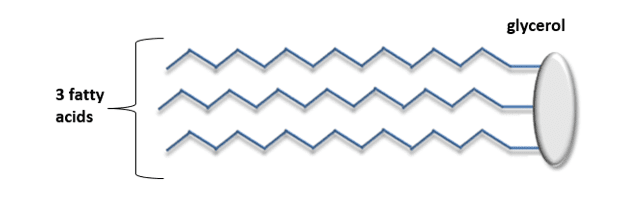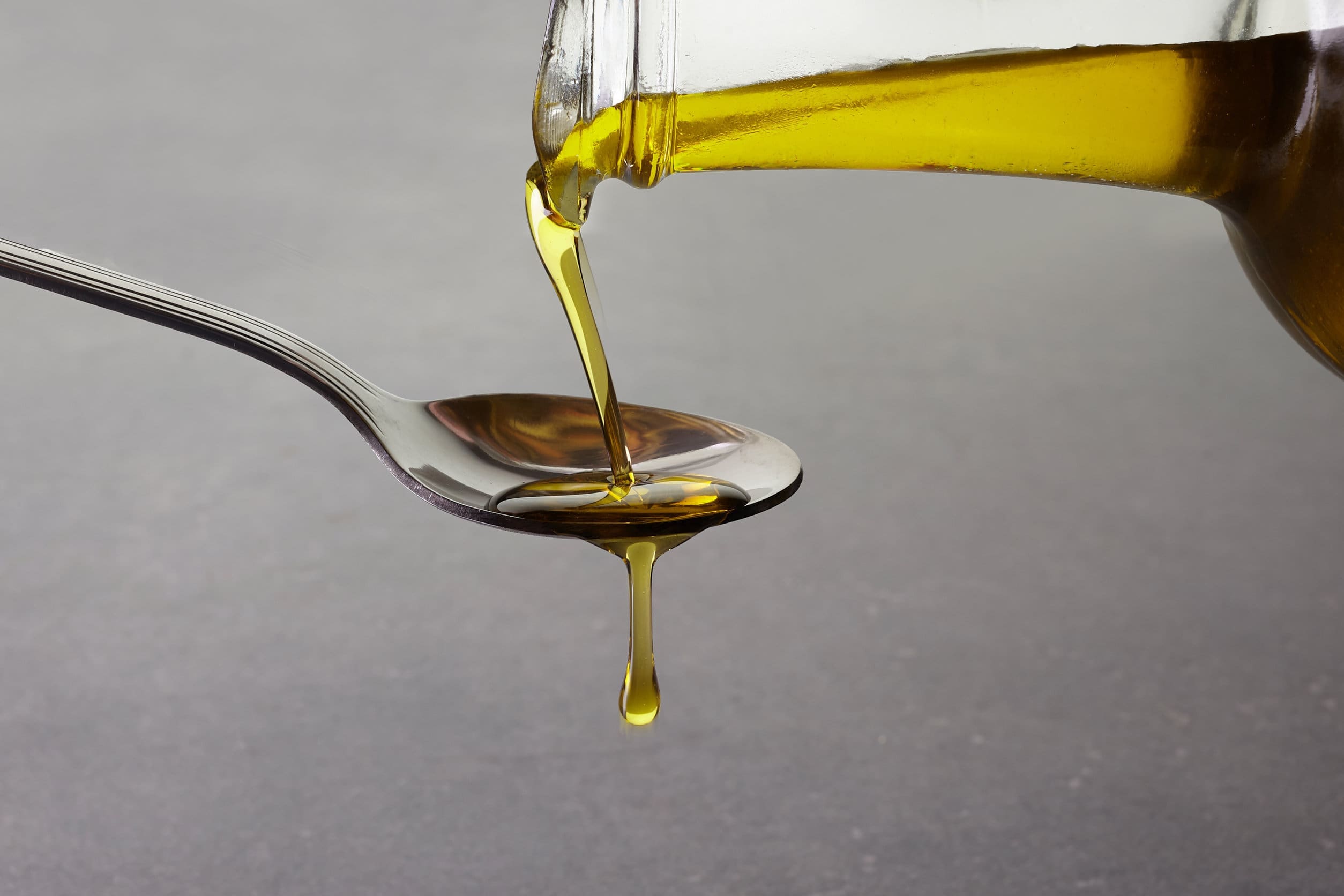Lipids are fats and oils that are large molecules made up of smaller units. A molecule of glycerol joined to three molecules of fatty acids is what makes up a lipid:


Lipids contain the same three elements as carbohydrates: carbon, hydrogen and oxygen. The key difference between carbohydrates and lipids is that lipid molecules contain a much lower concentration of oxygen.
Lipids are an essential part of the structure in all cells. You will find them in large amounts in specific areas around the body where they offer a long-term store of energy, for example underneath the skin and around the heart and kidneys. Fat actually reduces heat loss as it acts as an insulator under the skin.
There are many different fatty acids; the three that are joined to a molecule of glycerol determine what type of lipid it is. There are a range of different lipids that are either animal fats or plants oils. Some examples of foods that contain these have been provided for you in the following table.
| Animal fats | Plant oils |
| BeefLambChickenOily fishButterMilkEggsCheese | Olive oilCorn oilSunflower oilRapeseed oilMargarine |
Animal fats tend to be solid at room temperature and begin to melt once warmed up. On the other hand, plant oils are always liquid; therefore, they are most commonly used for cooking, e.g. frying certain foods.
Although lipids are an essential part of our cells and our diet, too much can be harmful. This is especially in reference to saturated lipids (saturated fats) and cholesterol which have been known to link to heart disease.





